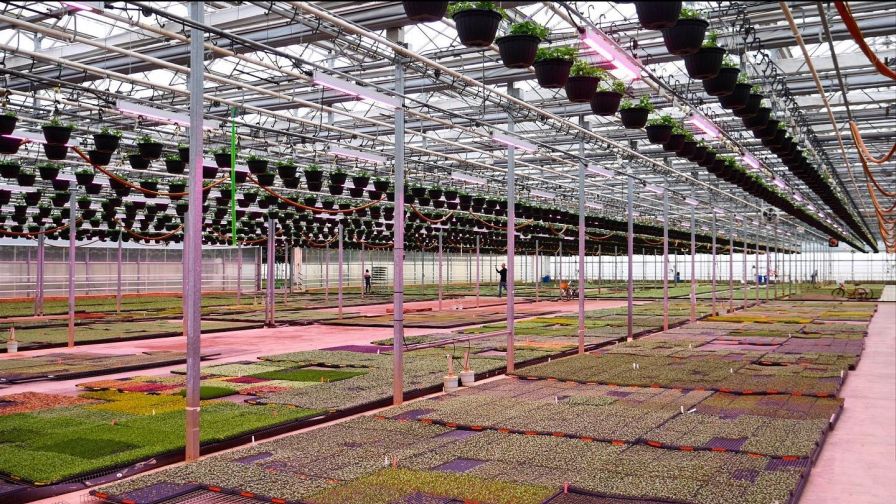
If you’re planning a new greenhouse project or a retrofit, you should include the LED rebate process when you’re considering budget and capital outlay. Photo: BIG Incentive Group
For greenhouse growers looking to make a switch to LED lighting, the good news is that more than 3,200 different power companies in U.S. offer an eclectic spectrum of rebate choices. No two utilities do this the same, and if a utility is offering a program, that program type can vary from utility to utility. Some will cover a certain percentage of the light, some have calculations like efficacy of light, some will cover the cost of the LED up to a certain percentage, and some may include the installation cost.
According to Ron DeKok, Chief Commercial Officer at BIG Incentive Group, it’s important that growers understand what their utility is offering. BIG Incentive Group, formerly Grow Rebates, was founded in 2016 to address the growing demand for energy-efficient horticultural technology in the commercial agriculture space.
Greenhouse Grower recently caught up with DeKok to learn more about the rebate process, challenges, misconceptions, and more.
How to Get the Right Information
DeKok says the rebate process should start by contacting the energy supplier to see if they even have a program.
“Not every utility offers rebate program, and not every utility has a concept of what a horticultural energy incentive/rebate may be,” DeKok says. In some cases, companies like Big Incentive Group may be the first party to educate utilities and help them build rebate programs with examples from other utilities.
The rebate process can be murky and complex, says DeKok. Some utilities have programs that are easy to find and straightforward, and others have programs with different calculations and requirements.
Sometimes the supplier requires additional elements that are seemingly separate from lighting, such as irrigation schedules.
“They want to understand cultivation practice, and they want overall energy usage in the greenhouse, not just lighting,” DeKok says. “We don’t see a lot of those, but they are out there.”
Navigating the Rebate Process
After you submit a rebate application, there will be an approval process that needs to be finalized before any product is purchased. Once you have that approval, you are able to make a product purchase.
“Ensure that the LED lighting is installed in a timely manner according to the specs that the utility provided, because it’s only after the installation has met requirements that the utility company can verify it was purchased and installed according to specs,” DeKok says. Even when the box is checked that the grower is eligible for a rebate, that process can take months.
“In many cases a grower has that capital tied up. This is where we try to mitigate that for the grower,” DeKok says. “We try to take the eventual savings and apply it to the up-front purchase.”
Best Practices and Recommendations
If you’re planning a new greenhouse project or a retrofit, DeKok says you should include the rebate process when you’re considering budget and capital outlay.
Energy-efficient technology should result in three things, DeKok says:
- If there is a way to mitigate the upfront capital to purchase technology by working with companies like Big Incentive Group, that can mean a huge reduction in capital expenditures.
- Understand that implementing this technology should reduce your operational expenditures or redeploy them to additional upgrades.
- By utilizing LEDs, you should see a substantial improvement in overall cultivation, shorter reduction times, better rooting, more even uniformity, and better yield too.
Finally, DeKok recommends keeping detailed records and documentation through the process to ensure it runs smoothly.
“Many of these programs have time limits or budget ceilings, and when the money is gone, it’s gone,” DeKok says. “Understand the time challenge and commit to it.”

